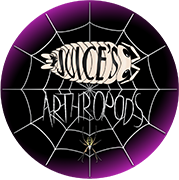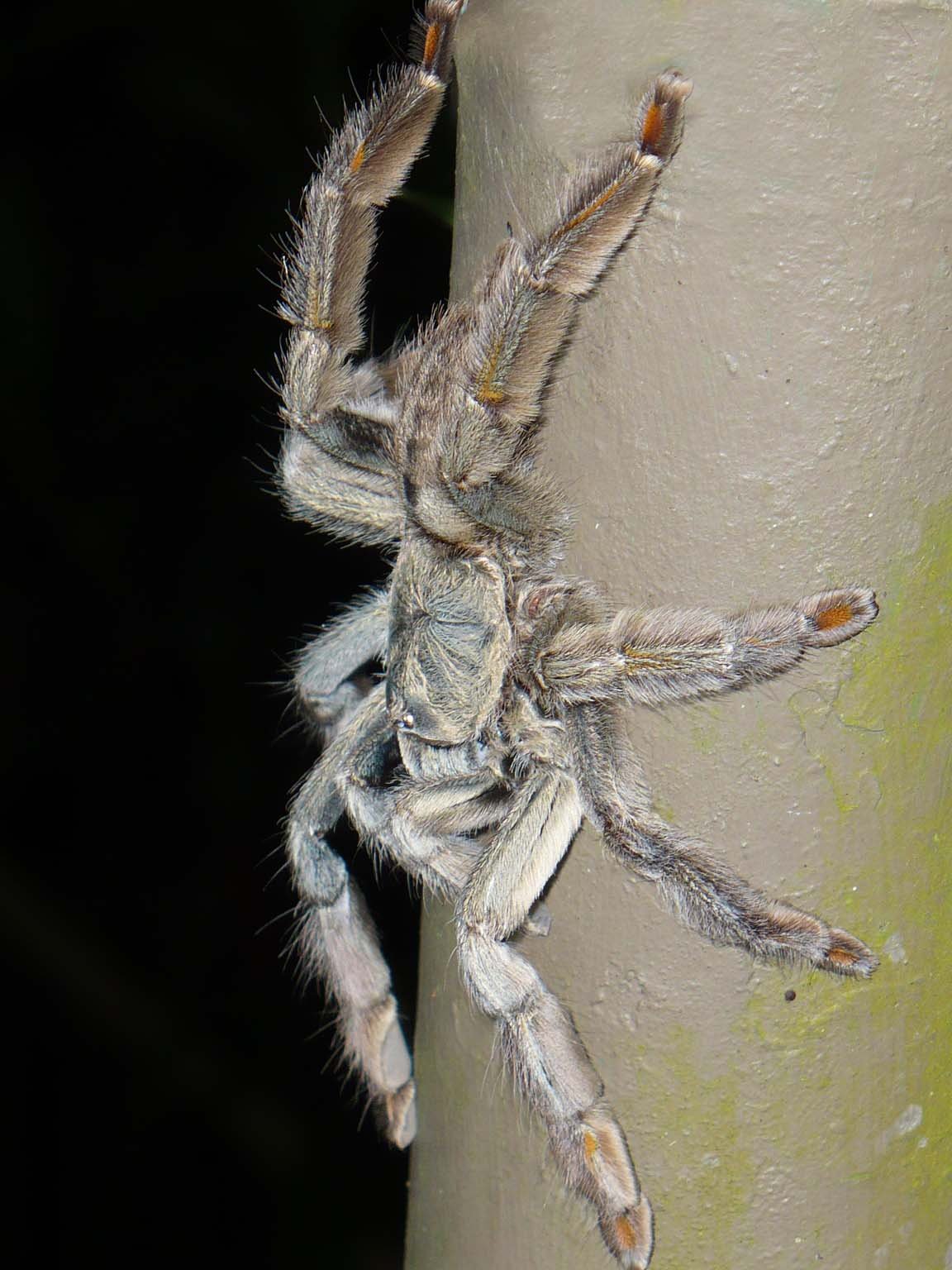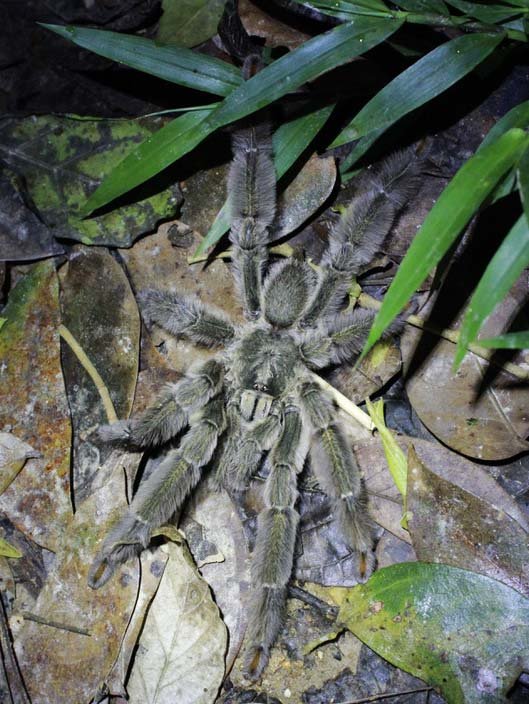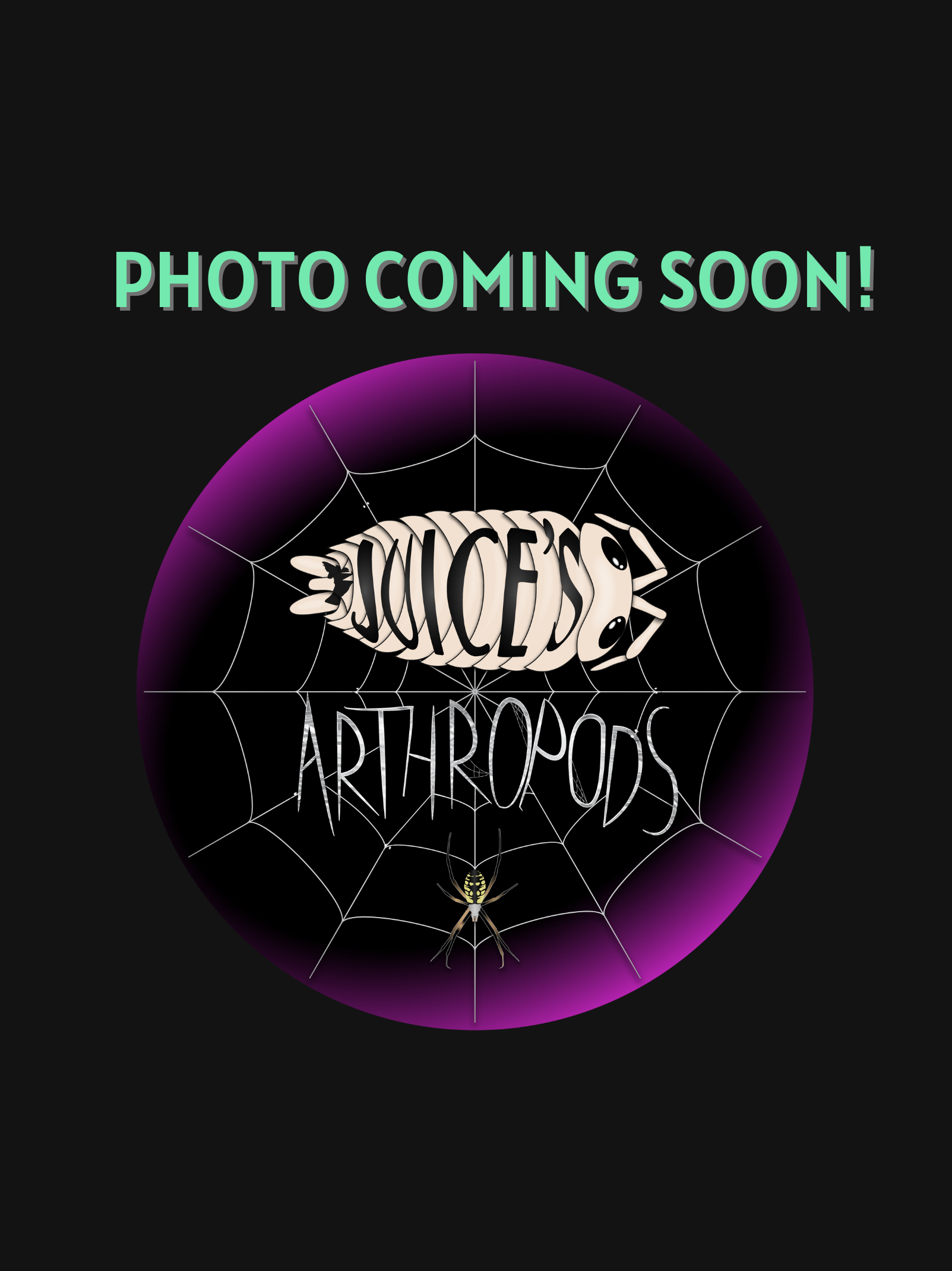Psalmopoeus cambridgei
Psalmopoeus genus, regardless of species, is the perfect intermediary tarantula for the person who is used to New World arboreals and wants to venture into old worlds but doesn’t want to jump in with both feet clumsily. The Trinidad Chevron, of the species we keep at Juice’s Arthropods, is by far the fastest of the three, allowing you to truly experience the adage of "light speed" travel. They lack the gorgeous velvety beauty of the Psalmopoeus irminia, but make up for it with their desire to be seen more than hide. We do not recommend this species for anybody who hasn’t at least owned a couple of tarantulas, as their venom is more medically significant than other New Worlds, but by bite reports, not as much as Old Worlds.
Psalmopoeus genus, regardless of species, is the perfect intermediary tarantula for the person who is used to New World arboreals and wants to venture into old worlds but doesn’t want to jump in with both feet clumsily. The Trinidad Chevron, of the species we keep at Juice’s Arthropods, is by far the fastest of the three, allowing you to truly experience the adage of "light speed" travel. They lack the gorgeous velvety beauty of the Psalmopoeus irminia, but make up for it with their desire to be seen more than hide. We do not recommend this species for anybody who hasn’t at least owned a couple of tarantulas, as their venom is more medically significant than other New Worlds, but by bite reports, not as much as Old Worlds.
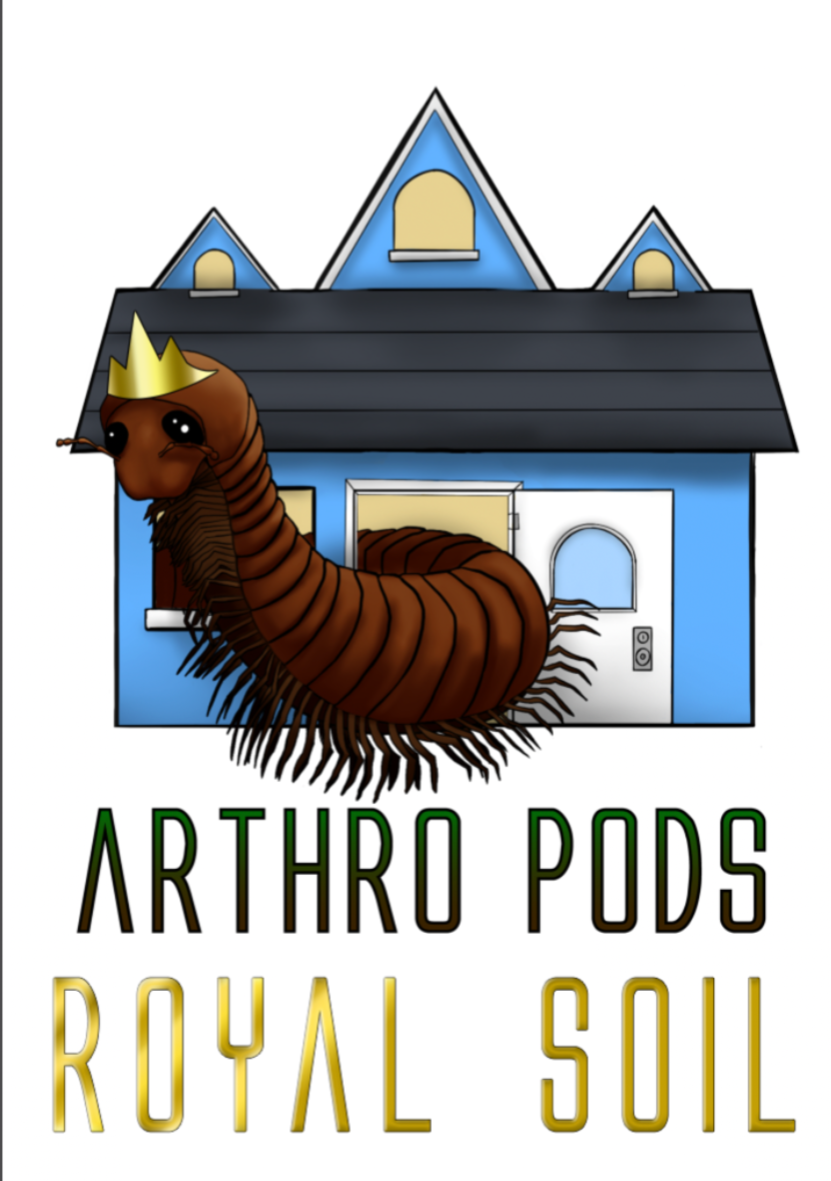
Psalmopoeus genus, regardless of species, is the perfect intermediary tarantula for the person who is used to New World arboreals and wants to venture into old worlds but doesn’t want to jump in with both feet clumsily. The Trinidad Chevron, of the species we keep at Juice’s Arthropods, is by far the fastest of the three, allowing you to truly experience the adage of "light speed" travel. They lack the gorgeous velvety beauty of the Psalmopoeus irminia, but make up for it with their desire to be seen more than hide. We do not recommend this species for anybody who hasn’t at least owned a couple of tarantulas, as their venom is more medically significant than other New Worlds, but by bite reports, not as much as Old Worlds.
What's the ideal diet for a Trinidad Chevron Tarantula?
All Tarantulas can eat a variety of feeders. Stick to crickets, dubia roaches, silkworms, horned worms occasionally, and a superworm or mealworm as the occasional treat!
How should I keep a Trinidad Chevron Tarantula?
For this particular creature, you can start with the small Arboreal Bliss enclosure, and when they get to be about ⅓ the size, you will want to upgrade to the medium or large Arboreal Bliss enclosure. Feed them as slings once a week, twice if their opisthosoma (abdomen) looks small, but if the opisthosoma is wider than their prosoma (pneumothorax), then wait a couple of days to feed. For juveniles or adults, stick to feeding once a week, nothing larger than their opisthosoma. Make sure to keep a full water dish at all times; wider and deeper is fine. Your tarantula can’t drown; they float on water.
How long could a Trinidad Chevron Tarantula live?
Females are thought to live between 12 and 14 years, with males living 2 to 4 years. These are the best estimates from multiple sources.
Some photos provided by iNaturalist and Wikipedia, credit to:
Factumquintus, some rights reserved (CC BY-SA 3.0)
Micha L. Rieser, some rights reserved
Paul Prior, some rights reserved (CC BY)
Stephanie Tran, some rights reserved (CC BY)
